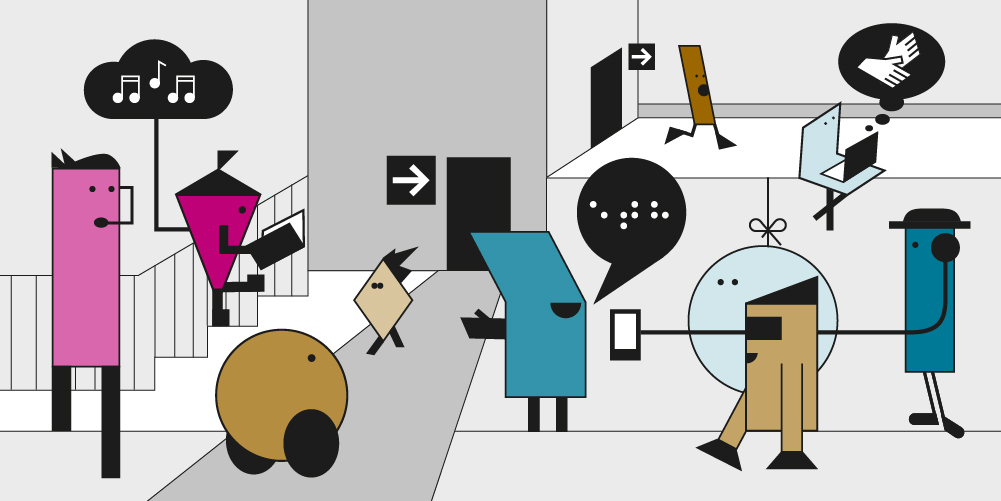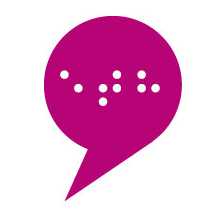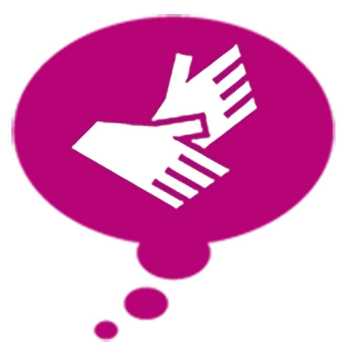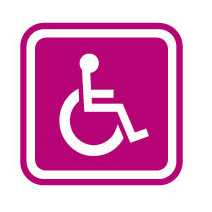Accessibility tips for tour guides and specialists
ETH Zurich provides tours that offer interesting insights into the university world. Tour guides and specialists should keep a few things in mind to make sure that people with disabilities have the best possible tour experience.
In addition to a few general tips that should be kept in mind for events involving people with disabilities, we’ve also put together detailed information on how to accommodate people with certain types of disabilities.

Barrier-free at ETH Zurich
In a nutshell
The following tips serve as a guide for tours and events involving participants with disabilities:
- Always focus on the person, not their disability (“people with disabilities”)
- Be respectful; don’t provide unsolicited assistance:
- At the beginning of a tour, approach any participants who have disabilities. Ask them what kind of assistance they would like to have.
- Always treat people with disabilities as equals:
- Don’t speak louder or more slowly unless specifically asked to do so.
- Speak directly to the person, not to any aides they may have.
- Make sure everyone is suitably positioned before resuming the tour:
- People with hearing impairments need a clear view of the sign language interpreter.
- Wheelchair users should be in the first row of the group.
- People with visual or hearing impairments should be close to the tour guide or specialist.
- Integrate any adjustments for people with disabilities into the tour experience in a way that feels natural:
- Suggest to all participants that they use the lift.
- Allow everyone to touch objects and experience them in a tactile way (if allowed).
- Find out before starting the tour:
- Where are the toilets for people with disabilities, and are there shortcuts to get there?
- Emergency and evacuation plans for people with disabilities
Specific tips based on type of disability

- Offer to meet participants with visual impairments at their public transportation stop.
- Don’t touch people or their assistive devices (e.g. white cane) or their service dogs without asking
- Briefly describe yourself at the beginning of the tour. Participants who used to be sighted will then have a better idea of who is leading the tour:
- Mention a few defining characteristics about your appearance.
- You can mention features that are important to you (such as “I like to dress in bright colours”).
- If there are any important works of art or architectural elements, describe them in words as much as possible:
- From the big picture down to the details
- Materials used
- Location in the room: what does the room in which we are standing look like?
- Point out potential obstacles:
- Unmarked stairs
- Steps going down
- Objects that extend into the room
- Invite all participants to touch exhibited objects if allowed.
- If there is a big exhibition with similar objects, choose one or two representative objects to describe.

- Participants with hearing impairments need to pay more attention to their visual surroundings in order to read lips or sign language:
- Participants with hearing impairments need to be able to see the sign language interpreter at all times.
- Don’t speak while walking.
- Take a short break between showing something and talking about it so that the participant(s) can redirect their attention either to you or the sign language interpreter.
- After the first stop, ask if you spoke too quickly or too slowly.
Information: as agreed with Procom, tours of ETH are conducted in Swiss German sign language.

- Before starting the tour, guides and specialists should make sure that wheelchair-accessible elevators are available on that day.
- Describe objects that are not in the line of sight of participants
- Inform participants at the beginning of the tour if parts of the tour are not wheelchair accessible
- Don’t touch people or their assistive devices (e.g. wheelchair) without asking